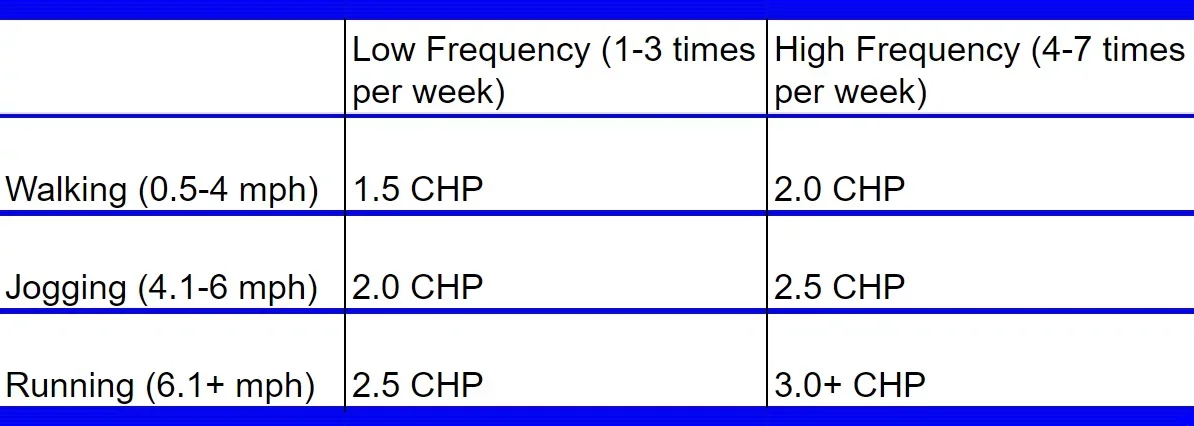Treadmill Motors: What You Need to Know
Treadmill motors vary in their capacities, and there are key variables to consider to ensure you find one best-suited for your lifestyle and fitness goals. In this complete guide to treadmill motors, we’re taking a deep dive into each component. From horsepower and type of current flow to torque, power rating system, warranty, durability factors, maintenance pointers, and more, you’ll leave this page with a full understanding of all the ins and outs of treadmill motors.
Table of Contents
Determining What You Need in a Motor
Maintenance Tips
Dealing with Motor Problems
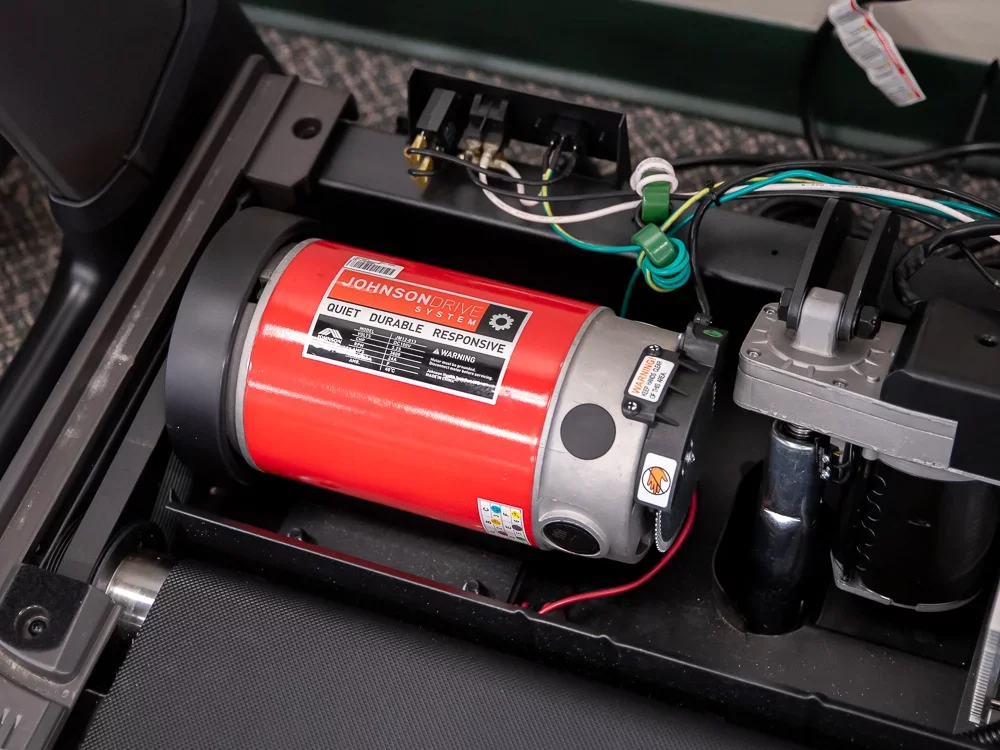
The treadmill motor is typically located at the front of the deck and protected by a cover that’s easily removable with a screwdriver. Photo by: Oleksandr Kosheliev / TreadmilReviews.net
Understanding the Mechanics
What is a Treadmill Motor?
The motor is the main hub and carries the most weight mechanically. It’s responsible for turning the energy from your outlet into movement that gets your treadmill belt moving. They are typically located at the front of the deck, but some like the NordicTrack X22i are installed in the rear to allow more room for stride and incline.
Without a motor, your treadmill is rendered useless, so it’s important to understand the basics as you shop. When car shopping, you certainly consider what’s under the hood including power and mileage. When you know how to interpret a treadmill’s motor specs, you can get a much better idea of how it will support your intended usage.
Cheap motors typically won’t last as long. You get what you pay for. If you come across a treadmill that seems to be priced lower than others that offer the same features, pay close attention to the motor specs, and refer back to the information shared in this article to make sure it lives up to the hype. You can replace a bad treadmill motor, but they’re pricey, and we’ll get into more detail on that in a bit. It’s always best to avoid premature wear and tear on your treadmill motor by understanding what kind you need and how to take care of it.
A Look at the Incline Motor
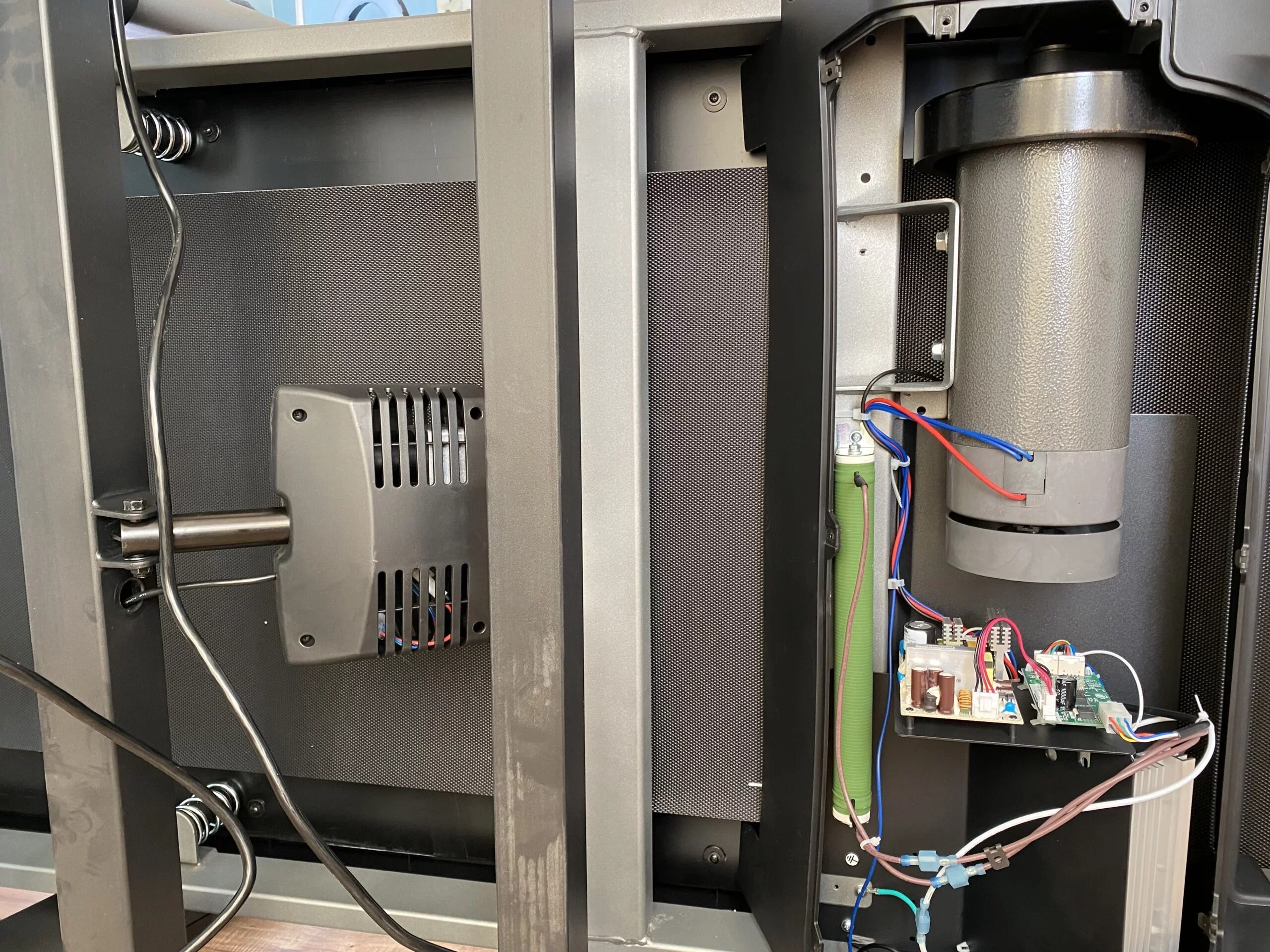
Incline is powered by a separate, smaller motor as seen on the left-hand side of the bottom of the NordicTrack X22i deck. Placement in the middle of the deck optimizes stability when moving up and down. Photo by: Jessica Jones / TreadmilReviews.net
While the primary treadmill motor works hard keeping the belt moving under the load of your bodyweight, incline treadmills rely on a separate motor focused on elevating and lowering the deck as you train. Having two motors focused on these separate functions allows for smoother transitions with minimal vibration no matter how fast you’re running.
Your treadmill’s thrust motor can be placed in a couple different spots. Some are housed within the same enclosure as the primary motor, while others are installed beneath the deck as pictured above. In either case, they’re most often installed in the middle of the deck for optimal stability.
It can be difficult to find specs on the incline motor, because they’re not as significant a factor as the primary motor. As long as users fall within the manufacturer’s suggested weight limit, incline motors should hold up as they don’t sustain the degree of wear and tear as the main motor. They’re also less powerful and far less expensive. All the same, it’s good to know the difference between the primary and thrust motor and apply regular maintenance to each.
The Brains of the Operation: Overview of the Circuit Board
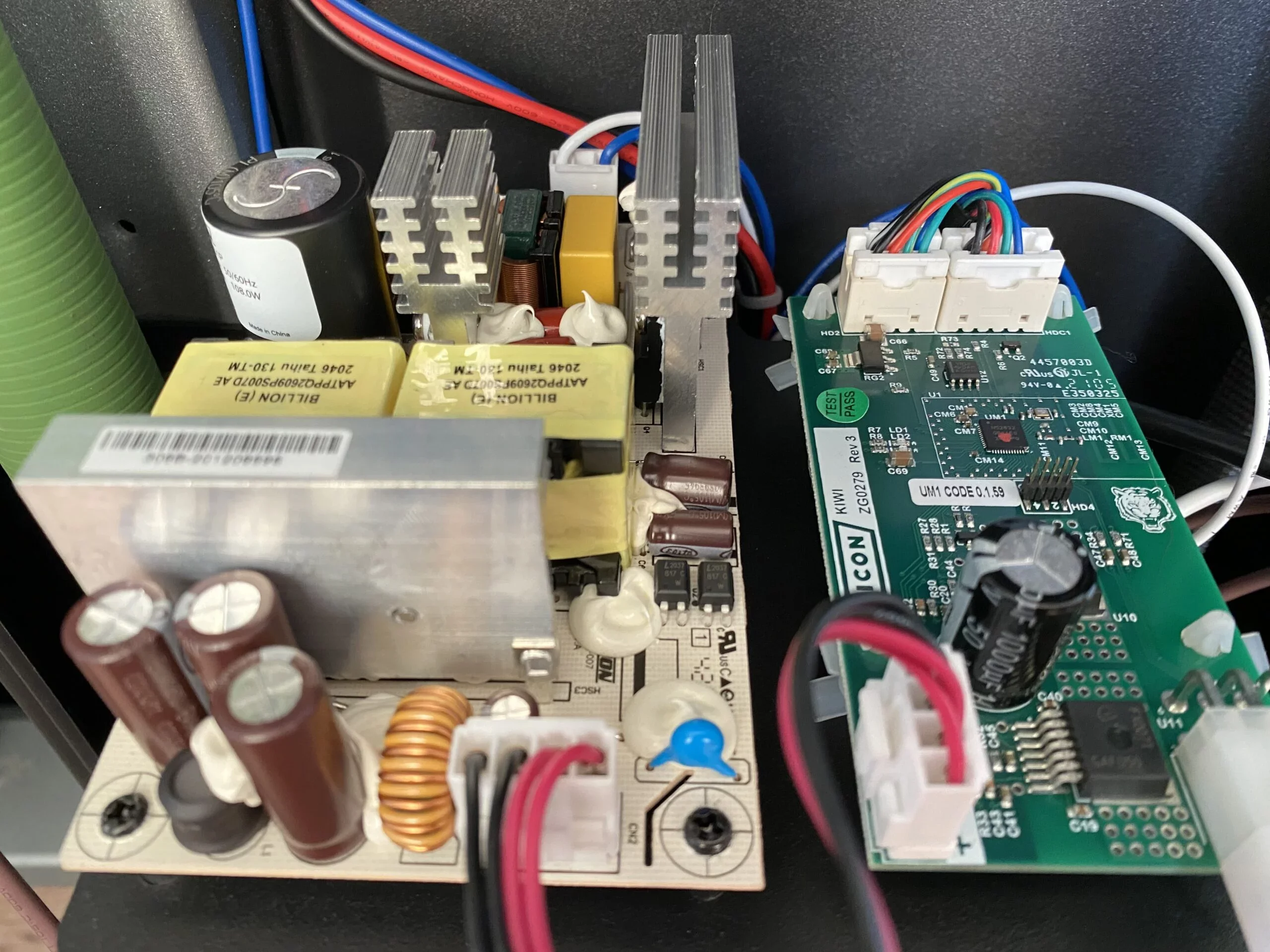
The treadmill combo board is the master power controller that ensures electricity from your outlet is efficiently converted to DC power to make the motor run. Photo by: Jessica Jones / TreadmilReviews.net
They go by many names including PWM boards, SCR boards, controllers, combo boards, and servo controllers. The plastic circuit board contains traces that are electrically conductive. These pathways route electronic signals for clear communication across the various electronic components of your motor. In addition to power conversion, they’re also responsible for controlling the voltage to the motor relative to belt speed for smooth operation. When properly maintained, you shouldn’t have to replace the control board, and I’ll cover this in more detail in the maintenance section below.
The Five Primary Motor Variables
I recently purchased a protein powder, because it claimed to pack 52 grams of protein per two scoops of powder. It wasn’t until I opened it, however, that I found a “scoop” was more than one cup! Sure, I could have divided the total contents by the servings per container to figure out the size of the scooper as I stood in the grocery store, but who does that? Companies are betting on consumers focusing on inflated sales language carefully phrased to make a product seem better than it really is.
When it comes to treadmill motors, you can fall victim to similar semantics when you don’t understand a few key terms and how they can be combined to make a treadmill motor sound like something it’s not.
Motor Size
The motor size is the most amplified spec you’ll come across as you shop, so let’s grasp what these numbers mean. By definition, horsepower is a unit of power equal to 550 foot-pounds per second, or 745.7 watts. For a treadmill, the average motor size is 2.5 HP, but they range anywhere from 1.5-5.0 HP.
The higher the horsepower, the more you can typically expect to spend. Of course, there are many aspects that determine pricing, but, generally speaking, lower horsepower produces less speed consistency and a shorter overall lifespan. Does this mean you should shoot for a 5.0 HP motor? Not necessarily. Keep reading to learn how to determine your horsepower needs.
Horsepower Rating System
Now that you understand that treadmill motor energy is measured in horsepower, it’s critical to understand how that horsepower was measured. To analogize, think about running a sprint vs. a marathon. Most people can run a 100-meter dash at around 15-mph. The average pace for a marathon, however, is around 5.5-mph. An athlete capable of reaching a 15-mph sprint speed would be delusional to arrive at a marathon expecting to maintain this pace for 26.2 miles.
With this analogy in mind, when rating horsepower, there are three systems used:
Peak Duty: “Peak” stands for the peak horsepower that the treadmill will reach and no more. It’s similar to the sprinter capable of reaching that peak speed of 15 mph. Just as running this fast would lead to quicker fatigue, running at peak motor power for longer periods of time will lead to faster wear and tear.
Treadmill Duty: This rating falls in-between peak and continuous duty. The motor will periodically shift from peak power to lower power to avoid overheating. Think of a runner slowing down to catch their breath before speeding back up.
Continuous Duty: Continuous describes how much power is maintained throughout the workout and can be compared to the marathoner maintaining a 5.5 mph pace. This is the ideal rating system reflecting a motor best able to run continuously at peak power with minimal wear and tear.
RPMs
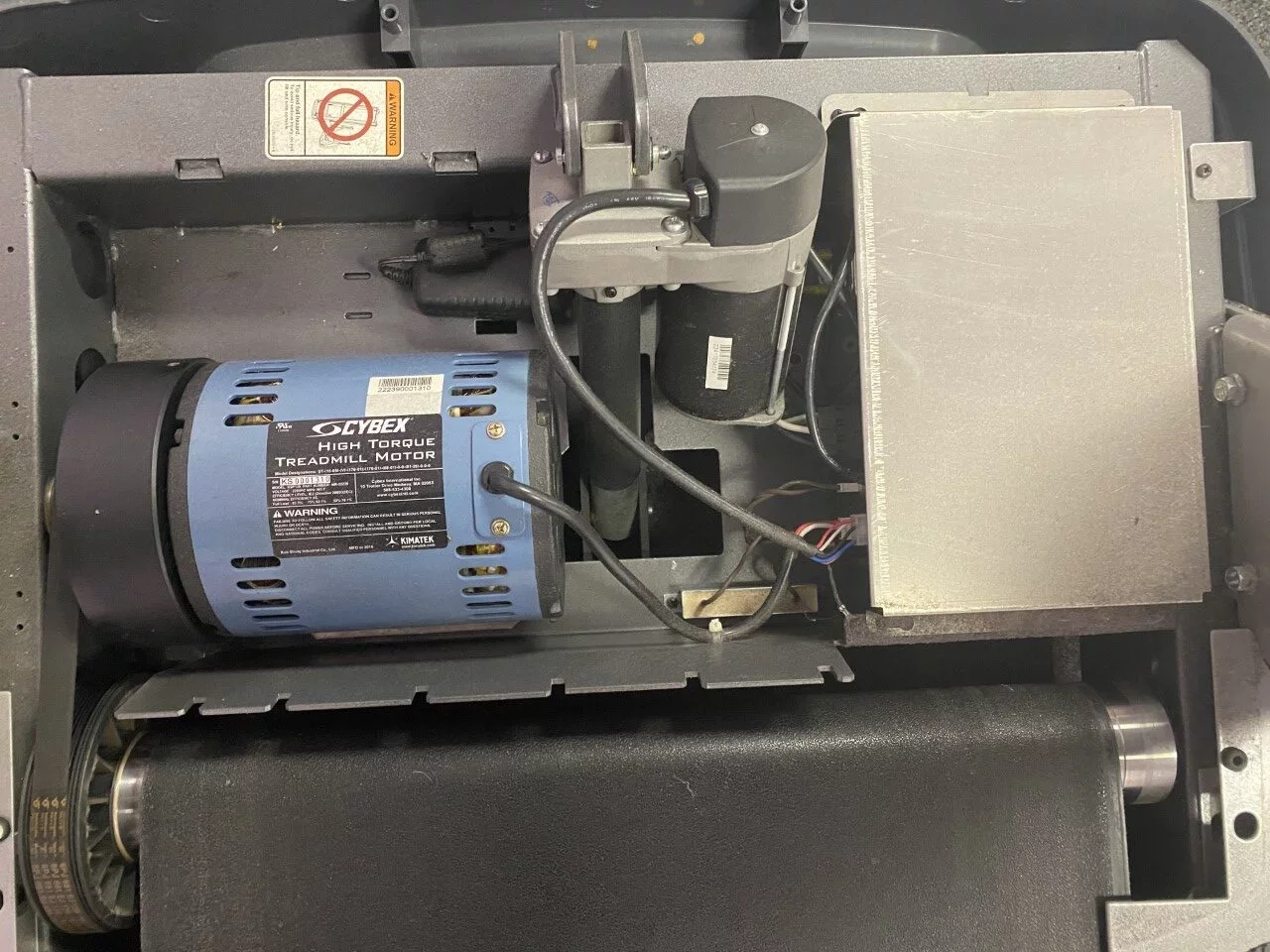
A high-torque treadmill motor is more efficient and will typically last longer than those that run at high RPMs. Photo by: Jessica Jones / TreadmilReviews.net
A motor’s revolutions per minute determine torque, otherwise known as its ability to make your belt move. Low torque can result in disruptive lags that reduce the quality of your workout. I’ve noticed it can be hard to find the RPM rating on the specs sheet. When in doubt, it’s worth it to contact the manufacturer directly to procure this information.
A treadmill motor’s RPM rating has an inverse relationship with torque. The lower the RPM, the higher the torque. Higher torque allows for better durability, and shooting for a RPM of 4,000 or below is ideal. A RPM rating of over 5,000 is cause for concern and should be avoided. Especially when considering motors with high horsepower ratings, check the RPMs. Remember semantics… manufacturers know you’ll focus on horsepower and can cut corners by highlighting a 4.0 CHP motor while hiding the fact it has a RPM rating of 8,000.
Current Type
This one’s easy to completely overlook, and it’s sometimes not even listed on the specs sheet. Treadmill motors will either be powered by a direct or alternating current of electricity. Most home treadmills are DC-powered, so let’s get an understanding of what this means.
Direct Current Treadmill Motor Pros
- Since continuous current doesn’t require power through a chain or belt that needs to be cooled by a fan, DC motors are often less noisy.
- The quick burst of torque when the treadmill is started produces more rapid acceleration.
- It’s typically easier to adjust speed since speed and load torque share an inverse relationship.
- Higher energy efficiency can be achieved due to the use of magnets instead of copper windings.
Direct Current Treadmill Motor Cons
- DC motors aren’t able to produce as much torque as AC, making the motor less powerful.
- DC motors don’t last as long as AC motors and require more maintenance.
Alternating current motors are more common in the commercial treadmill market. The motors on these products are powered by alternating current that turns a belt, chain, or flywheel.
Alternating Current Treadmill Motor Pros
- People who carry more weight can enjoy a quicker response to changes in speed and incline.
- AC motors are able to maintain smooth operations for longer periods, an important factor for people training for longer runs.
- Less maintenance is required, and owners can expect a longer service life.
- Since they use wire coils instead of a magnet, AC motors typically don’t weigh as much.
Alternating Current Treadmill Motor Cons
- AC motors take longer to warm up.
- You can expect to pay more for a treadmill with an AC motor.
If you’re buying a treadmill that’ll be used commercially, AC motors are the way to go. You won’t be bogged down with constant maintenance, and they’re better able to stand up to continual use throughout business hours.
For home use, AC treadmills can be a good choice if you carry a lot of weight and/or expect high-frequency operation by multiple users. Keep in mind, due to power requirements, you might notice an increase in your electric bill if you go this route. DC treadmills are typically preferred for residential treadmill shoppers. They’re less expensive; quieter; smaller; more energy efficient; and quicker to start, stop, and change speeds.
Warranty
The manufacturer’s warranty gives you a good idea of motor quality. A high-quality motor will typically feature a longer warranty period and is a safer investment. The manufacturer’s willingness to back their motors for longer periods can also be an indicator of its durability expectations.
The motor warranty can range anywhere from a year to a lifetime. Let’s break down what you can expect:
- Warranties under five years typically indicate a sub-par motor that won’t last long.
- A 5-10 year motor warranty is standard and reflects average durability expectations.
- Warranties from 10 years to Lifetime feature premium quality and longevity.
Determining What You Need in a Motor
Bigger Isn’t Always Better
Now that you understand treadmill motor terminology, it makes more sense that selecting a treadmill based on the highest motor power isn’t always the most efficient allocation of your fitness equipment investment dollars. If you were shopping for a vehicle to shuttle the family to-and-from school, work, and extracurricular activities, it wouldn’t make sense to consider trucks with a high towing capacity. You could spend much less on a minivan more aligned with your needs.
Determining the right horsepower for your training needs requires you to consider training intensity, frequency of use, and bodyweight. The following chart serves as a helpful tool to arrive at the right horsepower:
Treadmills with No Motor
Did you know there are treadmills out there that don’t rely on a motor to get the belt moving? Manual treadmills cut out the fancy consoles with all their bells and whistles. The treadmill is powered by your own legs and typically features excellent cushioning. If you’d rather not worry about who’s using the treadmill and for how long or how often, a slat belt treadmill with no motor is worth taking a look at.
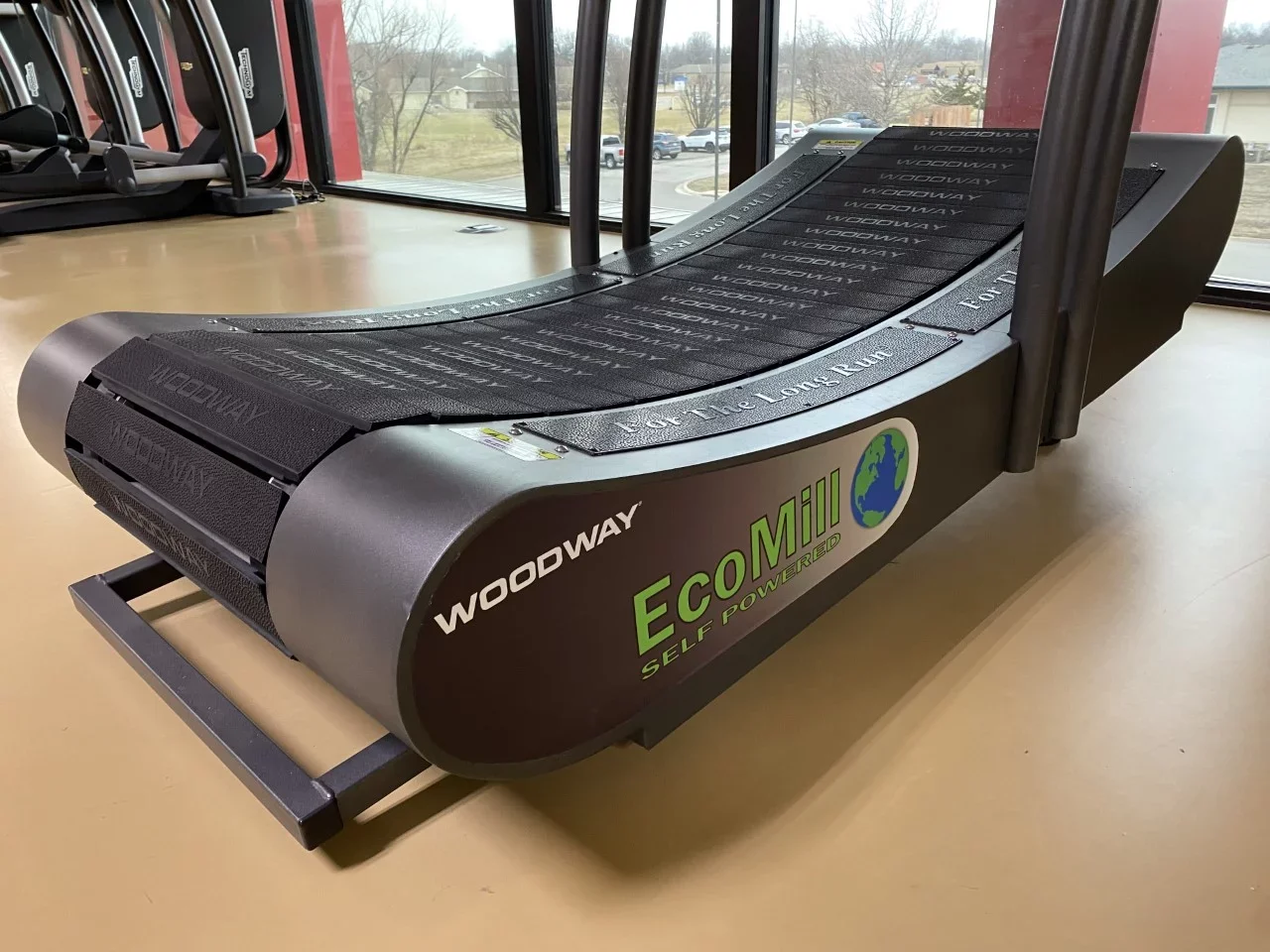
Slat-belt treadmills like the Woodway EcoMill don’t have a motor. Instead, they rely completely on the runner to get the belt moving. Photo by: Jessica Jones / TreadmilReviews.net
Maintenance Tips
When you follow the guidance in the previous section, you’ll be able to select a quality motor sufficient to meet your training needs. However, that’s not the end of the story. Just as your car’s motor requires regular maintenance to last as long as possible, there are some things you can do to prolong the life of your treadmill motor.
Monthly Dust and Debris Removal
Two most important maintenance duties for a treadmill owner are lubrication and cleaning the motor assembly. You can learn all about the former in our complete treadmill lubrication guide. Dust and debris can infiltrate the motor cover, so it’s critical you regularly unplug the machine, remove the cover, and vacuum the area around the motor being careful not to touch any wires or the circuit board.
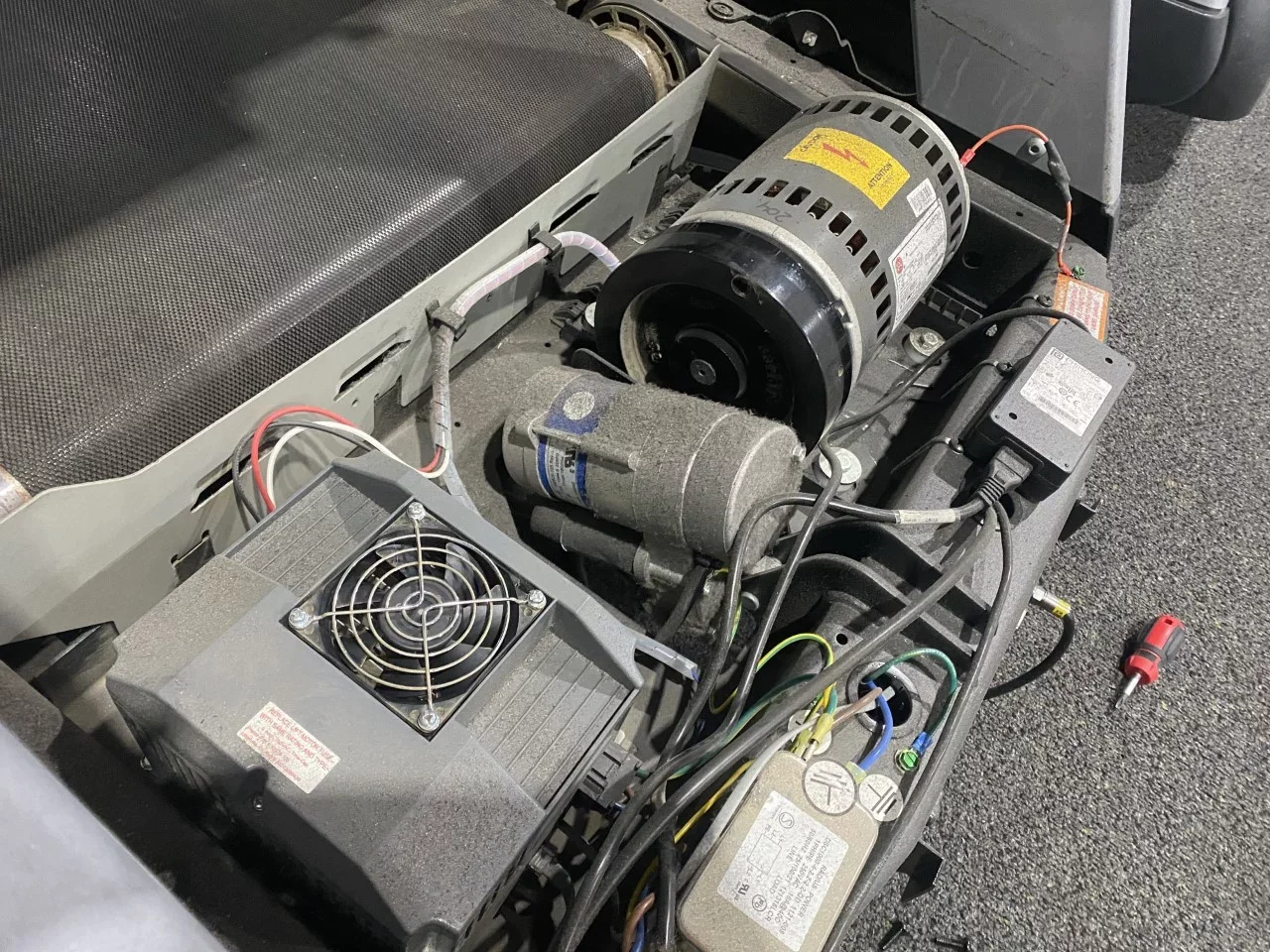
Buildup of dirt and debris is a primary cause for a plethora of treadmill motor issues. Monthly vacuuming goes a long way in improving durability. Photo by: Jessica Jones / TreadmilReviews.net
A mini handheld vacuum is perfect to get into all the little nooks and crannies. The owner’s manual will specify frequency, but, even if you don’t use your treadmill often, remember that it’s sitting in a room where air is flowing and life is happening. Vacuuming monthly is good practice.
Circuit Board Maintenance
Although it’s not common to run into issues with the motor controller, it does happen and is preventable. A surge protector can prove an invaluable investment of just $10, especially if you plan to keep your treadmill plugged in when not in use. With that being said, if you foresee an extended period of time when you won’t be using your treadmill, you can protect the circuit board by unplugging the machine during this time.
Proper Usage
There are some bad habits that, over time, take a toll on your treadmill motor. For starters, DC motor windings can become damaged when you attempt to make the belt move with your feet before the motor has had a chance to get things going.
It’s good practice to give your treadmill a break to allow the motor time to cool down when training at low speeds for very long training periods. To avoid disruption during these cooldown sessions, some treadmills like the NordicTrack 2450 have touch screens that tilt and pivot. This allows you to engage in off-treadmill training through iFit programming while the motor takes a break.
Dealing with Motor Problems
Purchasing the right treadmill for your training needs and following a consistent and efficient maintenance schedule will prolong the life of your motor. Being aware of warning signs is the first step in dealing with motor issues before they become serious problems. A few common indicators of trouble on the horizon include overheating, strange noises, burning smells, jams in the belt, dysfunctional speed and/or incline controls, and sparks.
There are some tests you can perform to verify whether or not a problem is present. Less intensive tests include shaft bearing inspection and regular checkups on the motor fan. If you feel confident, a multimeter will allow you to do more advanced testing into the circuitry to confirm power supply issues.
While some problems can be remedied easily by adding lubrication or removing dust and debris, more serious issues may necessitate replacing the motor. Whatever the problem, it’s worth it to work with a qualified technician if you don’t feel comfortable with your ability to perform mechanical maintenance yourself.
Stay In-the-Know When Treadmill Shopping
A treadmill is a significant investment. Not only does it cost a good chunk of change, it can add years and quality to your life. Just as you’d put time and effort into shopping for a new car or a home, taking the time to understand the ins and outs of treadmill shopping is worth it.
Frequently Asked Questions
Is the treadmill motor included in the warranty?
In most cases, the treadmill motor is included in the warranty.
How do you know if a treadmill motor needs replaced?
Issues like burning smell, overheating, sparks, and a non-moving belt, when addressed early, can be fixed. When you ignore symptoms of a motor problem too long, you'll eventually need to replace the motor when it stops working.
Can you replace a treadmill motor with one that's more powerful?
No, the new motor would need to match the original.
How much does a replacement motor cost?
While replacement treadmills themselves typically run $200-$300, expect to spend at least $500 including repair expenses.
How long do treadmill motors last?
Assuming you follow maintenance recommendations, you can expect a treadmill motor to last between 7-12 years.
Other Treadmill Reviews:
- Test HomePage
- Echelon Stride
- NordicTrack T 7.5 S - Pros & Cons (2024)
- Sole TD80 Treadmill Desk
- NordicTrack Commercial X11i
- NordicTrack T 8.5 S - Pros & Cons (2024)
- Exerpeutic TF1000
- NordicTrack T 6.5 S - Pros & Cons (2024)
- ProForm Sport 5.0
- Bowflex Max Trainer M5
- BowFlex TreadClimber TC100
- NordicTrack C 1650 Treadmill
- NordicTrack Treadmill Desk


